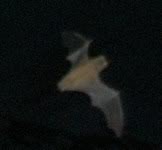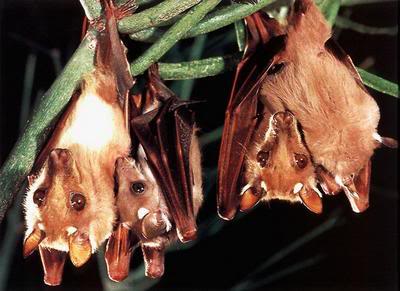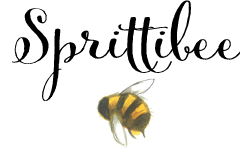I’m starting back up with my Field Trip Foto Friday Series that I started back in 2005 when I began blogging. In the interested of keeping things fresh for homeschoolers looking to take field trip adventures, I’m updating some of our favorite field trips in the past. This article originally posted in 2006.
Austin (and the surrounding hill country) is famed for being home to the world’s largest colony of free-tailed bats (they even named their ice hockey team after the bats!). Central Texas caverns and bridges are summer homes to these insect predators each year.

The bats that live under Congress Bridge in the Texas capital city’s downtown district are Mexican free-tailed bats which migrate between the United States and Mexico each year. Each night as the bats leave their roost at sunset, they travel across the countryside consuming from 10,000 to 20,000 pounds of insects! Visiting Austin’s bats is a fun way to learn about one of nature’s most misunderstood and feared, flying mammals.
 This bat photo is from the top of the bridge as the last few bats emerged. They leave so quickly that is next to impossible to catch a snapshot of them. Often times it is disappointing when trying to photograph the bats if they emerge in the dark.
This bat photo is from the top of the bridge as the last few bats emerged. They leave so quickly that is next to impossible to catch a snapshot of them. Often times it is disappointing when trying to photograph the bats if they emerge in the dark.
It is amazing how close to the bats you can get standing near the middle of Congress Bridge, watching a black cloud of flapping wings emerge into the blue dusk. You can also stand in the park and watch from a distance or ride in a tour boat that sits directly under the bridge in Austin’s Town Lake.
Be sure to check into BATCON‘s (Bat Conservation International) detailed ‘Austin Bats’ page for the best times and dates to visit the Congress Bats. They have a stellar website (link to their front page below), wonderful photographs, much educational information and even PDF lesson plans on bats!
We did a homeschool unit study on bats a year or so before we took this trip in 2005 and read many wonderful books on bats. One of our favorites was Stella Luna. Click over on the image of the book (I’m an Amazon Affiliate) and order one for your own homeschooled kids! We love the photos in this book. I also have one on the snake (“Verdi”) by the same author and illustrator.
Since this field trip, my little boy (pictured below) has grown up and graduated and is now in college! He’s 20!

His younger 2 brothers enjoy going to see the bats when we have friends visiting from out of state or out of town and we have taken them quite a few times. This is a field trip worth repeating.
Here’s a photo of the Kaden the last time he went to see the bats:
If you plan to visit the bats, the best times to go are in July and August. Most of the bats migrate to Mexico in November and don’t return until March.
The photos for this field trip were taken in April of 2005. We still got to see a lot of bats in off-season, so don’t skip the trip downtown just because of less than perfect viewing conditions. There are PLENTY of bats… and some even stay all year at the roost.
Austin’s local Newspaper, ‘The Austin American-Statesman’ created a bat observation area next to the Congress Bridge which is well-kept and pleasant. As you can see in the tranquil image above, it offers great viewing for photography (much better than the view from the bridge itself). Be sure to bring money for parking, though, and/or come early so you can download an app to your phone to help you pay with your phone for the space you park in. Parking is a bit of an ordeal, so you’ll want to set aside some time to get settled.
Each year there are more than 100,000 people who take advantage of Austin’s unique natural tourist attraction and witness this interesting nightly event.

Man, those were the days! Now my bigger kids are up and grown and my younger set is about this big! Crazy how time flies, mamas – don’t blink. Make those memories and dose your days with lots of love and smiles, because that is what they will remember most about being home with you… that, and amazing field trips!
My favorite type of bat is the flying fox; also called the fruit bat. There are many different species of fruit bats, but my favorites are those that look like the ones below. I found this photo on someone’s class website (for kids) and there were no credits. It is certainly a great shot and not my own. I wish I could go and visit the Australian fruit bat colony at Bellingen Island that I read about while researching for this post. You won’t be sorry if you visit the link for Bellingen Island below. The photographer there has some stunning photos and sells them as stationary.

Quick Links:
Bat Facts
Australian Fruit Bat Colony at Bellingen Island
Bat Conservation International






Oh thank you for stopping by the ol’craftygirls blog…i always have coffee on hehe so stop by anytime… I LOVE your links!! You are going to keep me a BIZ-AY!! hehe…and I also love the 3 dots after every thought…it can be annoying…but um I have a wierd obsession with them…Thanks for the links again! (i would be happy to give you private digital scrapbooking lessons anytime!)
Sounds really interesting! Thanks for all the great info. They are really interesting creatures. We use KONOS too and are studying horses right now and are on the last week of cowboys, etc. It’s been fun but has lasted a lot longer than planned. Well, have a great day!
Shelly
We’ve always wanted to see these guys emerge from under the bridge but have never been near there at the right time. Good pics!
BTW, I got here by way of your swap ad at Musing Minds…good ad!